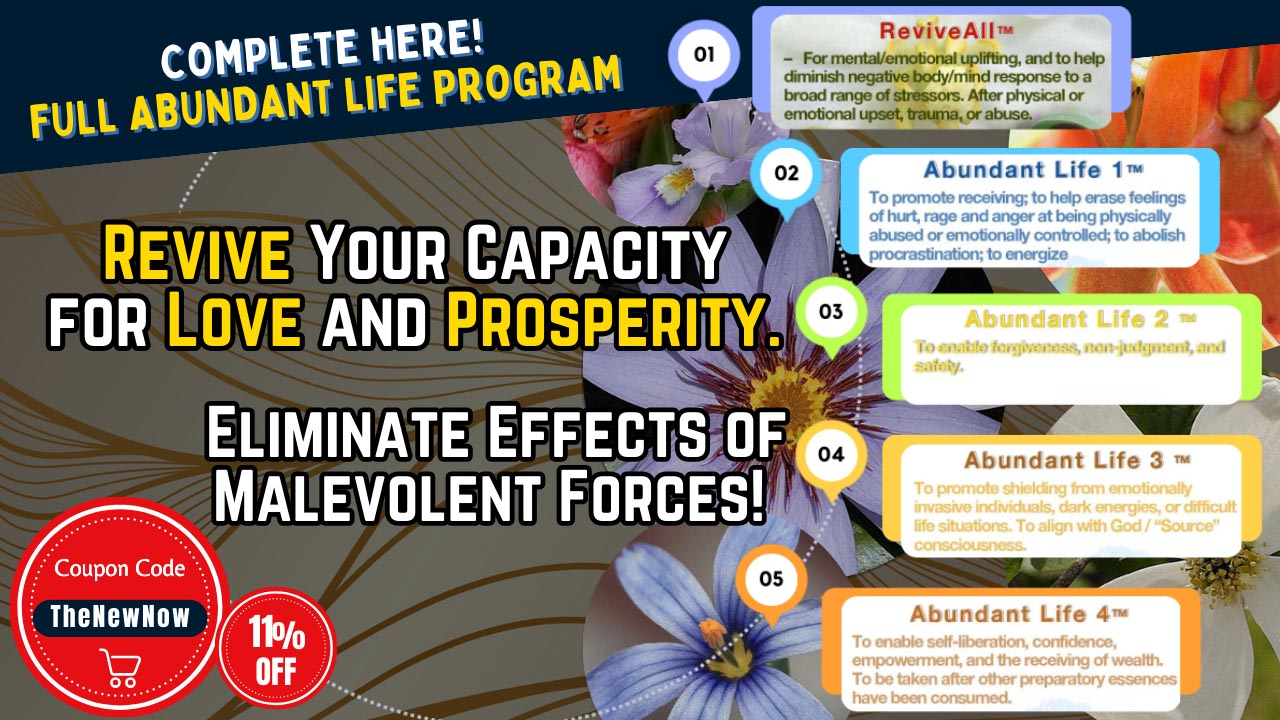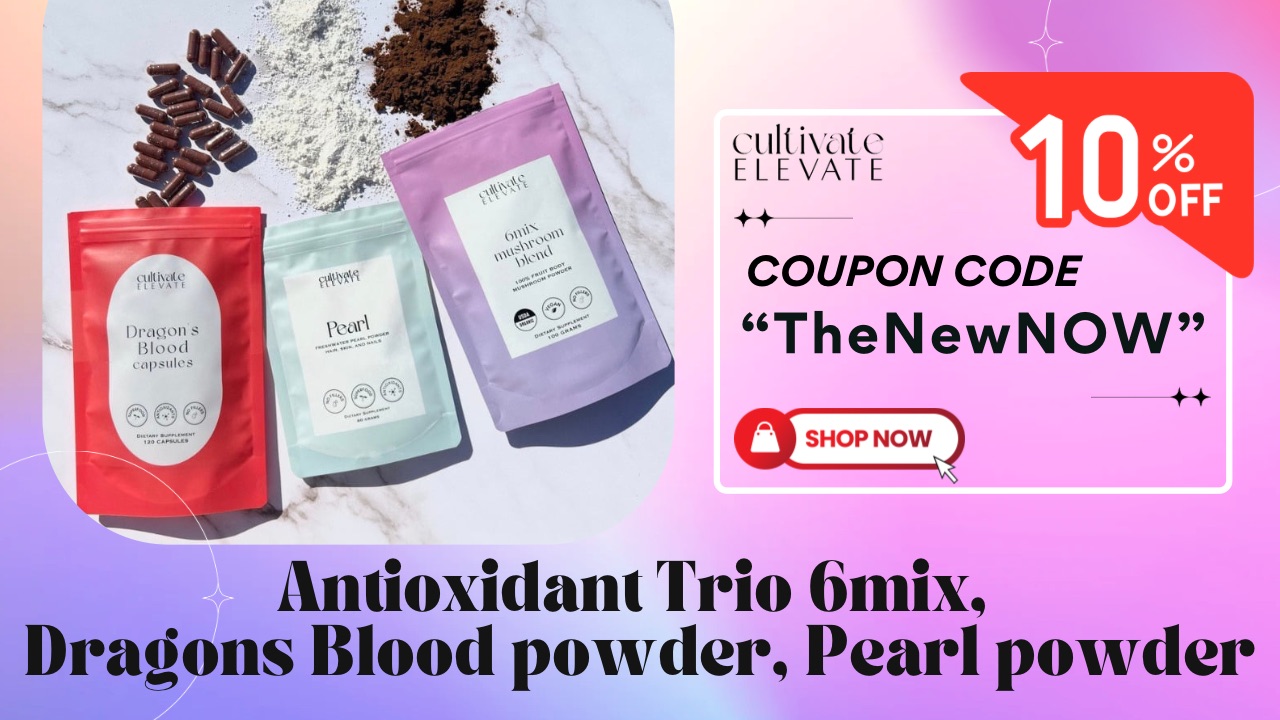Red Clover Beats Inflammation and Oxidative Stress
Visit our Re-post guidelines
Red clover has been touted as one of the top herbal medicines in the world and now scientists are discovering how red clover actually works in your body
Red clover, a native flowering plant found in Europe and Asia, is the source of many health benefits, including the abilities to beat inflammation and lower oxidative stress.
Infections, allergies, and autoimmune diseases upset the balance of your cells, which leads to inflammation, and major diseases associated with aging, such as heart attacks, stroke, cancer and Type 2 diabetes. Neurodegenerative conditions like Alzheimer’s and Parkinson’s show increased oxidative stress and inflammation as well.[i] It is not surprising that current interest in red clover and its healing elements is rising.
Three Components of Red Clover
1. Formononetin
One of the key elements of red clover is formononetin, a dietary isoflavone, which is helpful in controlling diseases that are thought to be caused by inflammation and oxidative stress, such as diabetes, obesity and metabolic syndrome.[ii]
A treatment with formononetin controlled hypoglycemia and significantly reduced insulin resistance and oxidative stress in sciatic nerve tissue in diabetic animal research, making it an effective candidate for treatment of Type 2 diabetic neuropathy.[iii]
In other research, red clover treatment in diabetic rats successfully reduced hyperglycemia, improved insulin sensitivity and contributed to higher longevity (SIRT1 expression in rat pancreatic tissue).[iv]
Red clover sprouts (high in formononetin) reduced metabolic syndrome by decreasing obesity, lowering blood glucose levels and improving the lipid metabolism in obese mice that were given a high-carbohydrate and high-fat diet.[v]
Red clover isoflavones, such as formononetin, decreased total cholesterol by 29% in a meta-analysis covering 12 studies of 910 peri- and postmenopausalwomen.[vi]
Similarly, in a meta-analysis of 12 randomized control trials of 1,284 peri- and postmenopausal women, those who took red clover isoflavones for four weeks to 18 months improved their lipid profiles (significant decreases in total cholesterol, low-density lipoprotein cholesterol and triglycerides and a significant increase in high-density lipoprotein cholesterol).[vii]
Red clover isoflavone supplementation for 90 days also improved the lipid profile (significant decreases in total and low-density lipoprotein cholesterol) of 88% of the 60 postmenopausal women studied who had an increased body mass index.[viii]
In both human umbilical cord cells and zebrafish cell studies, formononetin also produced proangiogenesis effects (increased blood vessel creation in embryos) through binding cell signaling pathways (estrogen receptor alpha-enhanced ROCK-II).[ix]
In addition, formononetin ameliorated myocardia ischemia/reperfusion injury (loss of oxygen to the heart, which prevents pumping, and when oxygen returns but injures tissues, respectively) in rats (as measured by cardiac dysfunction, infarct size and cardiac markers) and inhibited the inflammatory response by impacting the “reactive oxygen species-thioredoxin interacting protein-nucleotide-binding domain and leucine-rich repeat-containing protein 3” (ROS-TXNIP-NLRP3) pathway.[x]
In a mouse model, formononetin also exhibited significant anticancer effects in multiple myeloma cancers (found in plasma cells) and decreased inflammation (through the ROS-regulated inhibition of the signaling cascade of aberrant cells impairing the immune system, called STAT3 and STAT5).[xi]
In a human study, 20 men treated with 160 milligrams (mg) per day of red clover-derived dietary isoflavones, (genistein, daidzein, formononetin and biochanin A) also showed significantly higher apoptosis (prostate cancer cell death) than in control subjects specifically for low to moderate-grade cancer.[xii]
Research affirms that formononetin isoflavones in red clover have cancer fighting benefits for breast, colorectal, ovarian,[xiii] bladder[xiv]and prostate cancers, decrease tumors and metastasis and interfere with inflammation-causing signals that allow cancer cells to grow and survive chemotherapy.[xv] In addition, formononetin has also shown neuroprotective properties by suppressing inflammation in the brain neurons of rats.[xvi]
Inflammation is involved in a host of diseases from obesity, atherosclerosis, and rheumatoid arthritis to cancer, neurological and cardiac diseases, and isoflavones, such as formononetin, show strong antioxidant, anticancer, antimicrobial and anti-inflammatory properties.[xvii]
2. Anthocyanins
Anthocyanins are pigment-related compounds found in red clover giving the plant its purplish color. These compounds fight both inflammation and oxidative stress.[xviii] Interest in anthocyanin pigments has intensified recently because of potential health benefits — as dietary antioxidants to prevent neuronal diseases, cardiovascular illnesses, cancer, diabetes, inflammation and atherosclerosis — and scientific progress in stabilizing the compounds by encapsulating them.[xix],[xx]
In a recent in vitro study, anti-inflammatory and antioxidant effects of red clover extract and red clover anthocyanins showed prevention of reactive oxygen species (ROS) and suppression of genes such as tumor necrosis factor, interleukin, inducible nitric oxide synthase, monocyte chemoattractant protein and cyclooxygenase.
In addition, the anthocyanins in red clover regulated two signaling pathways in cells, called nuclear factor kappa B (NF-κB) and nuclear factor erythroid 2-related factor 2 (NRF2), which are important to reduce inflammation and oxidative stress, respectively.[xxi]
You produce less NRF2 (a regulator of oxidants) as you age and that interferes with NRF2’s cross-talk with NF-κB, which then increases cytokine production (inflammatory proteins), which slowly tips the balance toward the oxidative side — a condition known as oxidative stress.[xxii]
For example, it has been found that two cytokines, interleukin-1 and tumor necrosis factor-alpha, are produced in excess in rheumatoid arthritis where they create inflammation and tissue destruction.[xxiii]
It is no wonder that anthocyanins found in red clover are recommended as powerful natural antioxidants that help reduce inflammation, contribute to the health of connective tissue and are effective in defusing dangerous free radicals that can irritate body tissues and cause the inflammation and joint pain prevalent in arthritis.[xxiv],[xxv]
In a study of 88 healthy, overweight and obese children ages 6 to 10, urinary biomarkers of inflammation and oxidative stress were elevated in obese children and signaled endothelial dysfunction.[xxvi] This imbalance between dilation and constriction of the blood vessels determines blood pressure and how well the heart is pumping blood out to the body and can contribute to increased inflammation and various heart diseases.[xxvii]
In a randomized, double blind trial of 150 subjects with hypercholesterolemia, those who consumed a purified anthocyanin mixture (320 mg per day) showed improved lipid profiles and reduced inflammatory responses compared to those who took a placebo twice a day for 24 weeks.[xxviii] Dietary anthocyanin consumption was associated with a 15% reduction of Type 2 diabetes risk in a meta-analysis of 200,894 participants and 12,611 Type 2 diabetes cases.[xxix]
In a meta-analysis of 14 cohort studies of flavonoids, subjects taking anthocyanins showed significantly lower risk for cardiovascular disease as well.[xxx]Intake of foods/extracts rich in anthocyanin improved vascular health, as shown in a meta-analysis of 24 randomized-controlled trials; two measures (vascular reactivity and stiffness) were significantly improved.[xxxi]
3. Polysaccharides
Polysaccharide compounds in red clover (including glucose, galacturonic acid, arabinose and galactose) can be used as natural hypoglycemic agents and antioxidants. DPPH (2,2-Diphenyl-1-picrylhydrazyl) and ABTS (2,2′-azinobis-(3-ethylbenzothiazoline-6-sulfonic acid)) are stable free radicals that are used to measure the radical scavenging activity of antioxidants.
Red clover polysaccharides were found to be 87% as effective as acarbose (a current glucosidase inhibition drug used for Type 2 diabetes)[xxxii] and nearly as effective as an antioxidant (92% scavenging rate of DPPH radicals and 99% of ABTS radicals) as ascorbic acid or pure vitamin C.[xxxiii]
In a breakdown study of polysaccharide types in red clover, rhamnogalactouronans exhibited the highest nitric oxide activity as an antioxidant.[xxxiv]Botanical polysaccharides found in plants, such as red clover, enhance macrophage immune responses, leading to immunomodulation, anti-tumor activity, wound healing and other therapeutic effects.[xxxv]
Red Clover Attacks the Root Causes of Diseases
Recent scientific research has uncovered how red clover successfully attacks two important root causes and markers of diseases, namely inflammation and oxidative stress, to help your body gain balance at the molecular cell level. Read more at GreenMedInfo.com about the amazing health benefits of red clover and its three components: formononetin, anthocyanin and polysaccharides.
References
[i] Pathways Bio.com. NRF20 Technology. https://www.pathwaysbio.com/nrf20-technology
[ii] Eva Miadoková. Isoflavonoids – an overview of their biological activities and potential health benefits. Interdiscip Toxicol. 2009 Dec; 2(4): 211-218. Published online 2009 Dec 28. doi: 10.2478/v10102-009-0021-3 PMCID: PMC2984117. PMID: 21217857
[iii] Manisha J Oza, Yogesh A Kulkarni. Formononetin Ameliorates Diabetic Neuropathy by Increasing Expression of SIRT1 and NGF. Chem Biodivers. 2020 May 27. Epub 2020 May 27. PMID: 32459048
[iv] Manisha J Oza, Yogesh A Kulkarni. Trifolium pratense (Red Clover) Improve SIRT1 Expression and Glycogen Content in High Fat Diet-Streptozotocin Induced Type 2 Diabetes in Rats. Chem Biodivers. 2020 Mar 18. Epub 2020 Mar 18. PMID: 32187456
[v] Shin-Ichiro Yokoyama, Miyuki Kodera, Akiko Hirai, Mitsuhiko Nakada, Yuki Ueno, Toshihiko Osawa. Red Clover (Trifolium pratense L.) Sprout Prevents Metabolic Syndrome. J Nutr Sci Vitaminol (Tokyo). 2020 ;66(1):48-53. PMID: 32115453
[vi] Wieslaw Kanadys, Agnieszka Baranska, Marian Jedrych, Urszula Religioni, Mariola Janiszewska. Effects of red clover (Trifolium pratense) isoflavones on the lipid profile of perimenopausal and postmenopausal women-A systematic review and meta-analysis. Maturitas. 2020 Feb ;132:7-16. Epub 2019 Nov 10. PMID: 31883666
[vii] Â Luís, F Domingues, L Pereira. Effects of red clover on perimenopausal and postmenopausal women’s blood lipid profile: A meta-analysis. Climacteric. 2018 10 ;21(5):446-453. PMID: 30269660
[viii] Chedraui P., Miguel G.S., Hidalgo L., Morocho N., Ross S. Trifolium pratense-derived isoflavones on the lipid profile of postmenopausal women with increased body mass index. Gynecol. Endocrinol. 2008;24:620-624. doi: 10.1080/09513590802288283. PMID: 19031218
[ix] Li S, Dang Y, Zhou X, Huang B, Huang X, Zhang Z, Kwan YW, Chan SW, Leung GP, Lee SM, Hoi MP. Formononetin promotes angiogenesis through the estrogen receptor alpha-enhanced ROCK pathway. Sci Rep. 2015 Nov 16;5:16815. doi: 10.1038/srep16815. PMCID: PMC4645220. PMID: 26568398
[x] Dan-Shu Wang, Liu-Yan Yan, De-Zhi Yang, Yang Lyu, Lian-Hua Fang, Shou-Bao Wang, Guan-Hua Du. Formononetin ameliorates myocardial ischemia/reperfusion injury in rats by suppressing the ROS-TXNIP-NLRP3 pathway. Biochem Biophys Res Commun. 2020 May 7 ;525(3):759-766. Epub 2020 Mar 4. PMID: 32145915
[xi]Chulwon Kim, Seok-Geun Lee, Woong Mo Yang, Frank Arfuso, Jae-Young Um, Alan Prem Kumar, Jinsong Bian, Gautam Sethi, Kwang Seok Ahn. Formononetin-induced oxidative stress abrogates the activation of STAT3/5 signaling axis and suppresses the tumor growth in multiple myeloma preclinical model. Cancer Lett. 2018 09 1 ;431:123-141. Epub 2018 May 29. PMID: 29857127
[xii] Jarred RA, Keikha M, Dowling C, McPherson SJ, Clare AM, Husband AJ, Pedersen JS, Frydenberg M, Risbridger GP. Induction of apoptosis in low to moderate-grade human prostate carcinoma by red clover-derived dietary isoflavones. Cancer Epidemiol Biomarkers Prev. 2002 Dec;11(12):1689-96. PMID: 12496063.
[xiii] Sunwoo Park, Fuller W Bazer, Whasun Lim, Gwonhwa Song. The O-methylated isoflavone, formononetin, inhibits human ovarian cancer cell proliferation by sub G0/G1 cell phase arrest through PI3K/AKT and ERK1/2 inactivation. J Cell Biochem. 2018 09 ;119(9):7377-7387. Epub 2018 May 15. PMID: 29761845
[xiv] Yiying Wu, Xing Zhang, Zhengzhao Li, Haibiao Yan, Jian Qin, Tianyu Li. Formononetin inhibits human bladder cancer cell proliferation and invasiveness via regulation of miR-21 and PTEN. Food Funct. 2017 Mar 22 ;8(3):1061-1066. PMID: 28139790
[xv] Ong, S.K.L.; Shanmugam, M.K.; Fan, L.; Fraser, S.E.; Arfuso, F.; Ahn, K.S.; Sethi, G.; Bishayee, A. Focus on Formononetin: Anticancer Potential and Molecular Targets. Cancers 2019, 11, 611. PMCID: PMC6562434. doi: 10.3390/cancers11050611. PMID: 31052435
[xvi] Li Z, Zeng G, Zheng X, Wang W, Ling Y, Tang H, Zhang J. Neuroprotective effect of formononetin against TBI in rats via suppressing inflammatory reaction in cortical neurons. Biomed Pharmacother. 2018 Oct;106:349-354. doi: 10.1016/j.biopha.2018.06.041. Epub 2018 Jul 11. PMID: 29966980.
[xvii] Yu J, Bi X, Yu B, Chen D. Isoflavones: Anti-Inflammatory Benefit and Possible Caveats. Nutrients. 2016; 8(6):361. doi: 10.3390/nu8060361.
[xviii] Tsuda T. Dietary anthocyanin-rich plants: Biochemical basis and recent progress in health benefits studies. Mol. Nutr. Food Res. 2012;56:159-170. doi: 10.1002/mnfr.201100526. PMID: 22102523
[xix]Yousuf B., Gul K., Wani A.A., Singh P. Health benefits of anthocyanins and their encapsulation for potential use in food systems: A review. Crit. Rev. Food Sci. Nutr. 2016;56:2223-2230. doi: 10.1080/10408398.2013.805316. PMID: 25745811
[xx] Castaneda-Ovando A., de Lourdes Pacheco-Hernández M., Páez-Hernández M.E., RodrÃguez J.A., Galán-Vidal C.A. Chemical studies of anthocyanins: A review. Food Chem. 2009;113:859-871. doi: 10.1016/j.foodchem.2008.09.001.
[xxi] Sang Gil Lee, Cindi R Brownmiller, Sun-Ok Lee, Hye Won Kang. Anti-Inflammatory and Antioxidant Effects of Anthocyanins of(Red Clover) in Lipopolysaccharide-Stimulated RAW-267.4 Macrophages. Nutrients. 2020 Apr 15 ;12(4). Epub 2020 Apr 15. PMID: 32326385
[xxii] Joanna D. Wardyn, Amy H. Ponsford, and Christopher M. Sanderson. Dissecting molecular cross-talk between Nrf2 and NF-κB response pathways. Biochem Soc Trans. 2015 Aug 1; 43(4): 621-626. Published online 2015 Aug 3. doi: 10.1042/BST20150014. PMCID: PMC4613495. PMID: 26551702
[xxiii] Tisoncik JR, Korth MJ, Simmons CP, Farrar J, Martin TR, Katze MG. Into the eye of the cytokine storm. Microbiol Mol Biol Rev. 2012;76(1):16-32. doi:10.1128/MMBR.05015-11
[xxiv] Arthritis.org. Healthy Living. Nutrition. Healthy Eating. 12 Best Foods for Arthritis. https://www.arthritis.org/health-wellness/healthy-living/nutrition/healthy-eating/12-best-foods-for-arthritis
[xxv]Joy Bauer.com. Photo Gallery. Best Foods for Arthritis. Anthocyanins. https://joybauer.com/photo-gallery/best-foods-for-arthritis/anthocyanins/
[xxvi] Selvaraju V, Ayine P, Fadamiro M, Babu JR, Brown M, Geetha T. Urinary Biomarkers of Inflammation and Oxidative Stress Are Elevated in Obese Children and Correlate with a Marker of Endothelial Dysfunction. Oxid Med Cell Longev. 2019 Oct 16;2019:9604740. doi: 10.1155/2019/9604740. PMCID: PMC6817929. PMID: 31737180.
[xxvii] Very Well Health. Endothelial Dysfunction. https://www.verywellhealth.com/endothelial-dysfunction-1746344
[xxviii] Zhu Y., Ling W., Guo H., Song F., Ye Q., Zou T., Li D., Zhang Y., Li G., Xiao Y., et al. Anti-inflammatory effect of purified dietary anthocyanin in adults with hypercholesterolemia: A randomized controlled trial. Nutr. Metab. Cardiovasc. Dis. 2013;23:843-849. doi: 10.1016/j.numecd.2012.06.005. PMID: 22906565
[xxix] X Guo, B Yang, J Tan, J Jiang, D Li. Associations of dietary intakes of anthocyanins and berry fruits with risk of type 2 diabetes mellitus: a systematic review and meta-analysis of prospective cohort studies. Eur J Clin Nutr. 2016 Dec ;70(12):1360-1367. Epub 2016 Aug 17. PMID: 27530472
[xxx] Xia Wang, Ying Y Ouyang, Jun Liu, Gang Zhao. Flavonoid intake and risk of CVD: a systematic review and meta-analysis of prospective cohort studies. Br J Nutr. 2014 Jan 14 ;111(1):1-11. Epub 2013 Aug 16. PMID: 23953879
[xxxi] Lucy Fairlie-Jones, Kade Davison, Emilie Fromentin, Alison M Hill. The Effect of Anthocyanin-Rich Foods or Extracts on Vascular Function in Adults: A Systematic Review and Meta-Analysis of Randomised Controlled Trials. Nutrients. 2017 Aug 20 ;9(8). Epub 2017 Aug 20. PMID: 28825651
[xxxii] Drugs.com, Acarbose. https://www.drugs.com/pro/acarbose.html#s-34089-3
[xxxiii] Hexiang Zhang, Jiangchao Zhao, Hongmei Shang, Yang Guo, Shilun Chen. Extraction, purification, hypoglycemic and antioxidant activities of red clover (Trifolium pratense L.) polysaccharides. Int J Biol Macromol. 2020 Jan 21 ;148:750-760. Epub 2020 Jan 21. PMID: 31978472
[xxxiv] Ligacheva AA, Danilets MG, Trofimova ES, Sherstoboev EY, Zhdanov VV, Guriev AM, Belousov MV, Yusubov MS, Korzh AP, Krivoshchekov SV, Dygai AM. Effects of Water-Soluble Polysaccharides with Different Chemical Structure, Isolated from Acorus calamus L. and Trifolium pratense L., on Nitric Oxide Production: A Screening Study. Bull Exp Biol Med. 2016 Jan;160(3):330-5. doi: 10.1007/s10517-016-3163-2. Epub 2016 Jan 8. PMID: 26742749.
[xxxv]Igor A Schepetkin , Mark T Quinn. Botanical polysaccharides: macrophage immunomodulation and therapeutic potential. Int Immunopharmacol. 2006 Mar;6(3):317-33. doi: 10.1016/j.intimp.2005.10.005. Epub 2005 Nov 10. PMID: 16428067
Dr. Diane Fulton is Emeritus Professor at Clayton State University. She holds Ph.D./MBA in Business (University of Tennessee – Knoxville) and B.S. with Math/Secondary Education majors (University of Wisconsin – Milwaukee). During her 45-year career as administrator/professor teaching research and business, she authored 10 books, over 50 articles, and is now writing children’s books about the body, mindfulness and cross-cultural awareness. Her passion is to share her knowledge to integrate a healthy body, mind and soul. To reach her: Clayton University’s Emeritus Professors Diane Fulton LINKED IN or Diane Fulton FACEBOOK.
 All of our Links: https://linktr.ee/freedomiscallingyou
All of our Links: https://linktr.ee/freedomiscallingyou





















